calsfoundation@cals.org
Gerald Lyman Kenneth Smith (1898–1976)
Gerald Lyman Kenneth Smith was a minister and political agitator who built a series of “Sacred Projects,” tourist attractions with a religious theme, in Eureka Springs (Carroll County) beginning in the 1960s. He attained prominence first in the 1930s as an organizer for Louisiana political boss Huey P. Long but was known more for far-right activism, particularly for anti-Semitic and fascist causes.
Gerald L. K. Smith was born on February 7, 1898, on a farm in Pardeeville, Wisconsin, to Lyman Z. Smith and Sarah Smith. He had one sister. He was descended from three generations of Disciples of Christ ministers, earned a degree in biblical studies from Valparaiso University in Indiana in 1918, and became a minister himself, serving churches in Wisconsin, Illinois, and Indiana.
He married Elna Sorenson in 1922; they adopted their only child, Gerald L. K. Smith Jr.
In 1929, Smith took the job of pastor at Kings Highway Disciples of Christ Church in Shreveport, Louisiana. He met Long, a future United States senator, who maintained a law office in Shreveport and who later prevented foreclosure of some of Smith’s congregants’ houses. Throughout his career, Smith would be attracted to powerful men on the left and the right who influenced him, Long among them. His association with the politically liberal Long angered conservative church directors, and only seven months after coming to Shreveport, Smith resigned from the church before they could fire him.
In the early 1930s, Smith began to express anti-Semitic and fascist sentiments and considered joining the Silver Shirts, a pro-Nazi group led by William Dudley Pelley. Instead, Smith became national organizer for Long’s Share-Our-Wealth Society, a group promoting the wealth redistribution plan that Long planned to use as the centerpiece for a 1936 presidential bid. The work made Smith discover his talent for moving the masses through public speaking. H. L. Mencken called him “the gutsiest and goriest, loudest and lustiest, the deadliest and damndest orator ever heard on this or any other earth…the champion boob buster of all epochs.”
Long was assassinated in September 1935, sending Smith in search of another cause and, ultimately, into the fold of Francis E. Townsend, a retired physician who proposed to ease the Great Depression by providing pensions to older people. In 1936, Smith and Townsend joined Father Charles E. Coughlin, a Roman Catholic priest who became nationally prominent via his radio programs, to create the Union Party. Opposing President Franklin D. Roosevelt, the party chose North Dakota Congressman William Lemke as its standard-bearer. Smith said he was proud to speak not only for Lemke but also for the Constitution, the American flag, and the Bible. The Smith-Townsend-Coughlin collaboration faltered because of personal rivalries, and Lemke’s candidacy failed.
Smith continued his agitation, founding several vehicles to fight communism, liberalism, organized labor, and Jews: the Committee of One Million; the Christian Nationalist Crusade; a monthly publication, The Cross and the Flag; the America First Party; and the Christian Nationalist Party. He ran unsuccessfully for the U.S. Senate and for the presidency several times. By 1956, when Smith made his last bid for the White House for the Christian Nationalist Party, his support base had shrunk to the far-right fringe. Nonetheless, he had enough adherents who provided contributions to fund his efforts.
In 1964, Smith came to Arkansas and bought Penn Castle, a Victorian mansion in Eureka Springs, an Ozark Mountain spa town that had lapsed into economic stagnation. He remodeled it lavishly, turning it into his retirement home. Two years later, he built the first of his Sacred Projects, a seven-story statue of Jesus, the “Christ of the Ozarks,” on Magnetic Mountain. Smith proclaimed that it was more beautiful than Michelangelo’s art. Disagreeing, an art critic likened it to a milk carton with a tennis ball stuffed on its top.
Soon Smith added the Christ Only Art Gallery, a Bible Museum, and a Passion Play staged in an outdoor amphitheater. The play was performed on a 400-foot reproduction of a street in old Jerusalem and included live animals. By 1975, the theater was expanded from 3,000 seats to 6,000 seats, and more than 188,000 had watched the play, making it the largest outdoor pageant in the United States. Jews denounced the play as anti-Semitic, but Smith called it “the only presentation of its kind in the world which has not diluted its content to flatter the Christ-hating Jews.”
The Sacred Projects helped to revitalize the Eureka Springs area. Despite some local criticism of Smith, he was hailed as an area hero and planned another major attraction: a $100 million, Disney-like replica of the Holy Land, including the Great Wall of Jerusalem, the Sea of Galilee, the River Jordan, in which people could be baptized, and scenes from Jesus’s life. Only the wall was finished before Smith died.
The Sacred Projects gave Smith some respectability but could not obscure the anti-Semitism and hatred for which he was most known. He maintained that Jesus was a Gentile whom Jews crucified; that Presidents Roosevelt, Truman, and Eisenhower were Jews; that Nazi dictator Adolf Hitler was a Bolshevik and a Jewish foil; that Jews invented communism; and that Jews prodded African Americans to begin the civil rights movement to jolt a tranquil American society. Smith lamented that he was castigated only because he was emboldened to air such issues.
Smith died of pneumonia on April 15, 1976, in California, his winter home. He is buried at the foot of the Christ of the Ozarks statue.
For additional information:
Jeansonne, Glen. “Arkansas’s Minister of Hate: A Research Odyssey.” Arkansas Historical Quarterly 59 (Winter 2000): 429–435.
———. Gerald L. K. Smith: Minister of Hate. Baton Rouge: Louisiana State University Press, 1997.
Ribuffo, Leo P. The Old Christian Right: The Protestant Far Right From the Great Depression to the Cold War. Philadelphia: Temple University Press, 1983.
Williams, Nancy, ed. Arkansas Biography: A Collection of Notable Lives. Fayetteville: University of Arkansas Press, 2000.
Glen Jeansonne
University of Wisconsin-Milwaukee
Michael Gauger
Milwaukee, Wisconsin
This entry, originally published in Arkansas Biography: A Collection of Notable Lives, appears in the CALS Encyclopedia of Arkansas in an altered form. Arkansas Biography is available from the University of Arkansas Press.

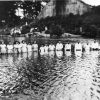

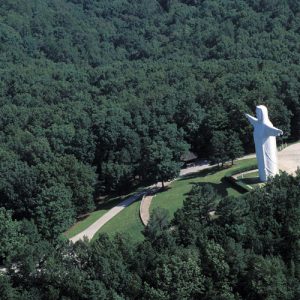 Christ of the Ozarks
Christ of the Ozarks 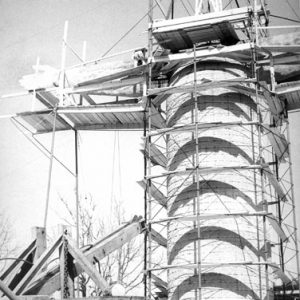 Christ of the Ozarks
Christ of the Ozarks 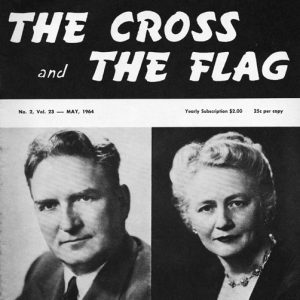 The Cross and the Flag
The Cross and the Flag 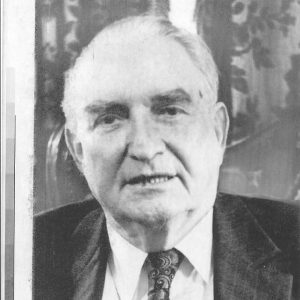 Gerald L. K. Smith
Gerald L. K. Smith 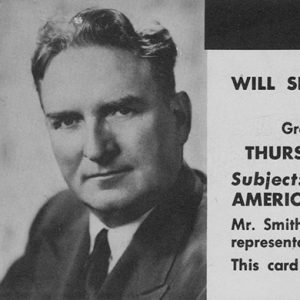 Ticket for Gerald L. K. Smith Speech
Ticket for Gerald L. K. Smith Speech  Gerald L. K. Smith Speech Flyer
Gerald L. K. Smith Speech Flyer 



What a hypocrite! A man who reveres Jesus Christ, the greatest Jew of all, and he’s anti-Semitic? And a pro-Nazi sympathizer? He desecrates the name of Christ to be called a follower of His, much less raise up a statue and establish a Passion Play. Sounds like Rev. Phelps of Kansas saying: God is love.